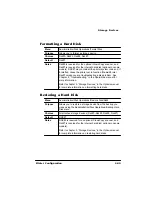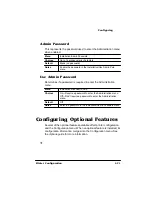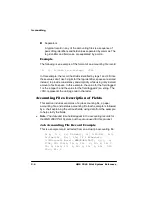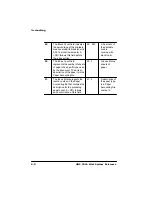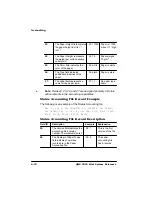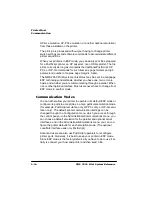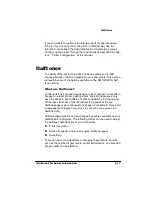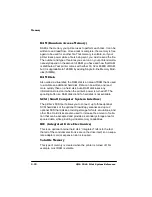
$FFRXQWLQJ
$GGLWLRQDO7HFKQLFDO,QIRUPDWLRQ
14:
The Simplex Count field is
number of the page faces
printed, including body and
header pages and taking into
consideration multiple copies.
14: 3
Three page
faces printed.
15:
The Duplex Count field
represents the sheet count of
duplex pages printed, taking into
consideration multiple copies.
15: 0
No duplex
pages.
16:
The Finishing Options field is a
number formed by adding the
codes for the different options:
0 None
2 Offset
Stacking
16: 0
No finishing
options.
17:
The Chunk Count field
represents the number of
collated chunks for this job. If
the complete document does
not fit in memory, chunk
collation is activated. A value of
1 for this field indicates no
partial collation was necessary.
17: 1
Entire job
printing in one
collated unit.
18:
The Jam field indicates how
many times the printer jammed
while printing the document.
18: 0
No jams during
this document.
19:
The Paper Types Count field
indicates how many different
types of paper were used in the
document and represents the
number of separate index
entries that follow the main
record for the document in the
Job Accounting file. A <CR>
follows this field before the index
entries.
19: 1
One type of
paper used in
this job.
Summary of Contents for 2060
Page 1: ...QMS 2060 Print System Reference 1800450 001B...
Page 12: ......
Page 13: ...QWURGXFWLRQ Q 7KLV KDSWHU About This Manual on page 1 2 Typographic Conventions on page 1 3...
Page 36: ......
Page 108: ......
Page 164: ......
Page 185: ...RFXPHQW 2SWLRQ RPPDQGV Q 7KLV SSHQGL Supported QMS DOCs on page C 2...
Page 190: ......
Page 195: ...RQILJXUDWLRQ 0HQX Q 7KLV SSHQGL Configuration menu charts...
Page 200: ......





